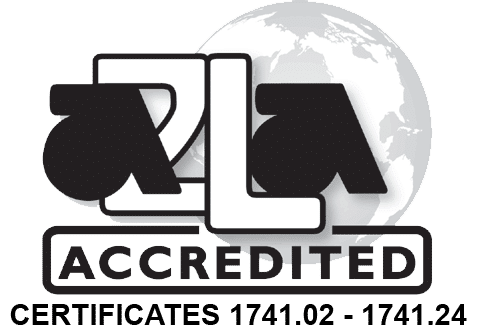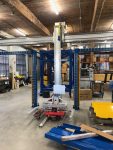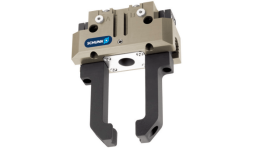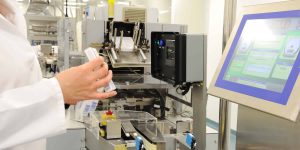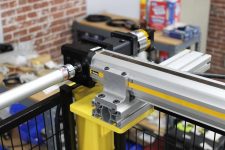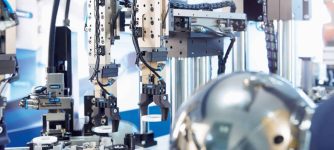Vision, Barcode, and RFID
Vision, Barcode, RFID, and Traceability Standards
Traceability standards continue to get tougher particularly in food, beverage, and pharmaceuticals. The ability to track specific materials, parts, or products through your process can be critical in meeting FDA regulations and avoiding or controlling recalls. A common way of identifying and tracking parts or products through your process is through the use of barcodes or RFID technology.
Barcode technology utilizes 1D or 2D symbology to read the barcode and identify items using a laser scanner or camera. Typically barcodes are used at the end of a line to identify a product or item. On the other hand, RFID tags are generally placed on a part or transport device at the beginning of the process. These tags not only help identify the item, but also allow for information to be added as it moves through the process. Read/write heads are used to transmit and receive information to and from the RFID tags.
If this sounds like automation that could benefit your operation, we want to hear from you. At Cross Company, we work directly with all of our customers to ensure that they’re getting the industrial automation or robotic equipment they need to optimize their production process, reduce risk, and free up employees to work on more critical processes.
Solutions for Vision, Barcode, and RFID Technologies
At Cross Company, we provide comprehensive solutions for vision, barcode, and RFID technologies designed to enhance traceability, quality control, and overall operational efficiency. Our offerings include modern vision cameras and sensors, advanced barcode scanners, and robust RFID systems, all tailored to meet the stringent requirements of modern industries. As traceability standards continue to evolve, having the right tools to track and identify materials, parts, and products throughout your process is crucial for compliance with regulations and for maintaining control over your production environment.
By integrating vision, barcode, and RFID technologies into your workflow, you can significantly improve production efficiency, reduce labor costs, and enhance the overall quality of your products. These technologies offer speed, accuracy, and reliability, making them indispensable tools for modern automation and traceability.
Contact us today to learn more about how our vision, barcode, and RFID products can benefit your operation.
Barcode scanners utilize 1D and 2D custom solutions to provide rapid and accurate product identification and tracking. Ideal for end-of-line applications, these scanners ensure seamless integration into your production process, enhancing traceability and operational efficiency.
The experts in Cross’s automation group provide completely 2D or 3D custom solutions tailored to exactly what you want to accomplish. This can include robotics, pneumatic or electromechanical motion, any lenses, lighting and lighting control needed and custom programming.
RFID systems offer comprehensive tracking solutions by storing and updating extensive information about products as they move through the manufacturing process. With read/write heads for efficient communication, these systems enhance tracking accuracy and data collection, optimizing process control and quality assurance.
Improve Your Industrial Manufacturing Efficiency
The use of vision systems like barcodes and RFID tags is common in a number of industries including packaging, logistics, food & beverage, pharmaceutical, and consumer products. They are used for a range of applications from machine setup and product identification to quality control and traceability.
The use of these technologies can greatly improve efficiency by reducing labor costs and raise the quality of your products by removing an opportunity for human error in data entry and improving your traceability.
Because there are so many options available for sensing and I/O, we encourage you to speak with one of our experts. Our team has years of experience helping customers choose the right sensor for their applications. And we can work with your team, too.
Greater efficiency
Reduced labor costs
Greater quality assurance
Raise product quality
Benefits of Barcodes and RFID
There are many benefits to using barcodes and RFID over other tracking and identification technologies. They offer a number of benefits over other identification and tracking technologies, including speed, accuracy, efficiency, and cost-effectiveness.
Speed
Barcode and RFID can be read very quickly and easily. This means that automating processes like these can speed up your throughput significantly
Accuracy
Barcodes and RFID are extremely accurate. That makes them excellent candidates for applications where precision and accuracy are important
Efficiency
Due to the high levels of speed and accuracy, barcodes can improve overall production efficiency by automating tracking and identification tasks
Applications of Barcodes and RFID in Industrial Automation
Vision Systems, Barcodes, and RFID are powerful technologies that can be used to efficiently identify and track objects in a range of industrial manufacturing automation applications. There are also a wide range of potential applications for implementing vision systems, barcodes, and RFID into your existing manufacturing process.
Some of these applications include:
Material handling – Many operations utilize barcoding and RFID to track the movement of materials across warehouses and factories. This ensures that real-world inventory matches planning and projections.
Assembly – Barcodes and RFID and also used to track the movement of components across assembly lines. This can be valuable analytical data for manufacturing operations.
Quality assurance – Quality control inspections are also valuable applications for barcodes and RFID. Products or components can be identified and tracked efficiently and reliably.
Shipping and receiving – Products can further be tracked throughout the shipping and receiving process. This allows for greater control of the products themselves throughout the production and shipping lifecycle
Inventory management – In warehousing and store environments, barcoding technology can be used for precise inventory tracking and management
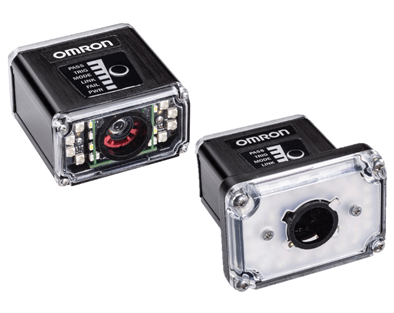
Why Cross Vision, Barcode, and RFID?
As the manufacturing world becomes increasingly competitive, automation is no longer a luxury. It can even mean the difference between your operation and a close competitor’s. Robotics, motion control devices, and other automation equipment have become integral parts of many manufacturing processes. When integrated properly, industrial automation can increase throughput, productivity, and worker safety.
Whether you need to implement automation systems for the first time or you’re looking to upgrade an existing system, Cross can work with you to develop custom solutions. We have the industry partnerships, technical industrial expertise, and world-class customer service necessary to provide you with the precision motion control products and accessories your operation needs.
Contact a member of Cross Automation today to start the process and get the automatron products, components, or accessories you’re looking for. And see for yourself why so many operations choose Cross as their single-source solution for industrial automation.
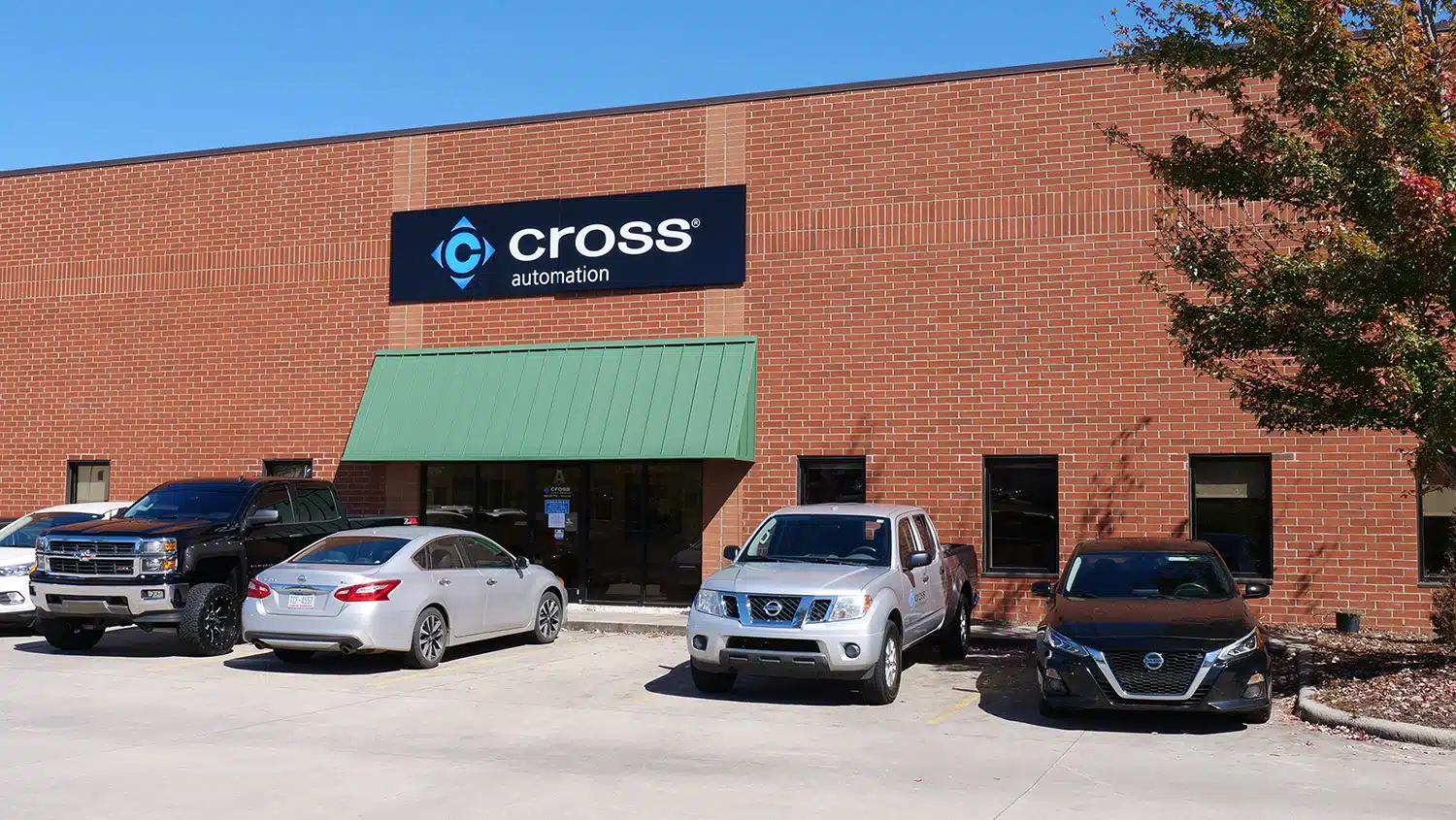
Related Automation Products
At Cross, we offer much more than just barcoding and RFID. We can also provide the products our OEM and other manufacturing partners need to succeed. Check out our other automation products and see for yourself.

